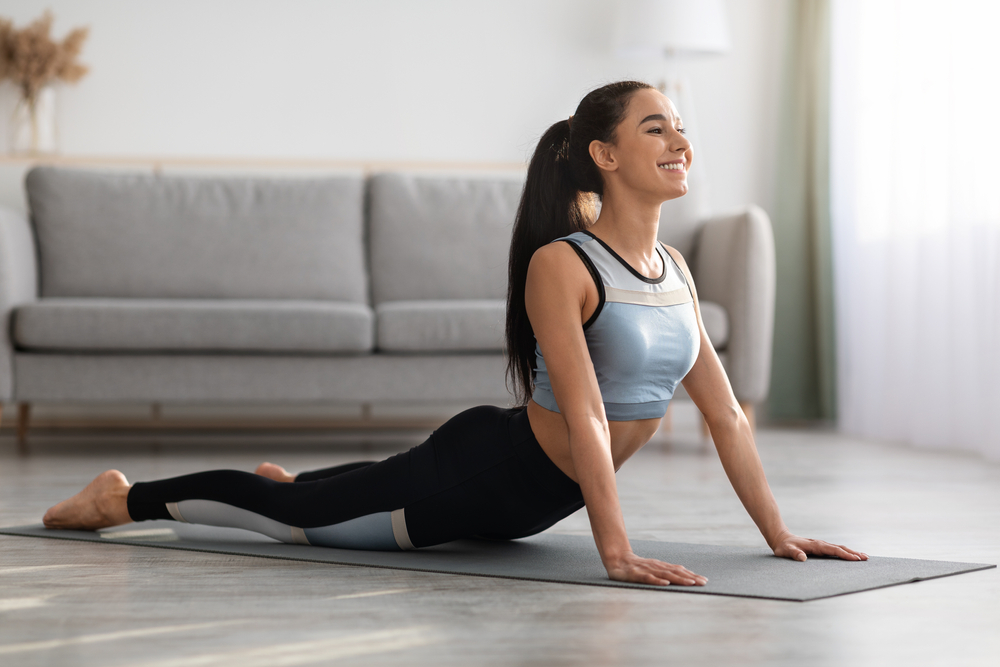
One of the most crucial aspects of incredible physical health is flexibility. Your body may lose flexibility over time though due to aging, an inactive lifestyle, stress, or poor posture and body movements. If you’re looking to improve your flexibility, practicing yoga daily, whether in a class or at home, could be one of the most effective ways to go about it.
Doing yoga for flexibility and mobility consistently is essential if you want successful results. Flexibility refers to a muscle’s ability to stretch, whereas mobility refers to a joint’s ability to move through its complete range of motion without limitation or difficulty. Simply defined, flexibility is concerned with the muscles, whereas mobility is concerned with the joints. With this difference in mind, it’s important to focus on mobility during the pre-workout period and flexibility during the post-workout period.
Specific yoga positions can help you improve muscle strength and alleviate stress or anxiety – in addition to increasing your flexibility. Increased flexibility and mobility will improve your athletic performance too.
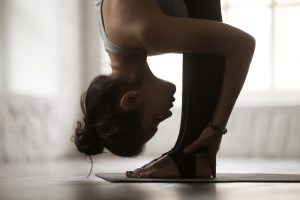
In this article, we’ll look at the benefits of flexibility and teach you how to improve flexibility in your back, hips, core, neck, and shoulders with yoga poses.
How Important Is Yoga For Flexibility And Mobility
Improving your flexibility and mobility has many benefits, ranging from improved mental and physical health. Below, we discuss these benefits briefly.
Reduced Muscle Tension: The tension and tightness built up in your muscles is released when you stretch. This makes future movement easier
Overall Reduced Pain: If your muscles stay tense, you are more likely to experience pain. Increased flexibility allows for tension release, relieving strain and stress in your body, especially your shoulder, back, and neck
Decreased Stress: As the pace of the world is getting faster at a speed impossible to keep up with, stress levels are rising too. Therefore, it has become increasingly important to release stress. This helps you feel more comfortable and relaxed in your body and mind
Improved Blood Circulation: Flexibility and mobility improve blood flow which can aid in muscle recovery. It also prevents stiffness and sore muscles, especially after a workout
Less Prone To Injury: Muscles that live through increased flexibility and mobility are stronger and less likely to sustain injuries
Improved Posture: Have you ever noticed how slouchy you become when your body is tight and tense? This tension can be relieved by sitting up straight and releasing the strain on your muscles
A Wider Range Of Motion: A greater range of motion is possible. It’s much easier to move your joints when you’re more flexible. We’re not claiming you’ll become as fluid like water, but your everyday movements will undoubtedly get more fluid
6 Yoga Poses For Increased Mobility And Flexibility
The Pigeon Pose
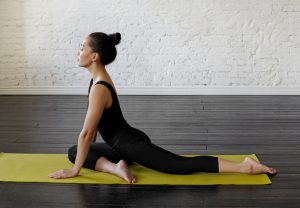
Kapotasana means imitating a pigeon. To get a sense of this pose, sit with one leg bent and the other stretched straight out behind you. The Pigeon Pose is the first hip-opening pose. This is an excellent hip opener for stretching and lengthening the ligaments and muscles.
The piriformis muscle will be stretched, and the sciatic nerve will be relieved with the outer extension action in the upper legs. This is very beneficial for individuals who suffer from sciatica. The psoas muscles, hips, and adductor muscles are all stretched in this pose, giving the muscles in your body much-needed relief.
Cat-Cow Stretch
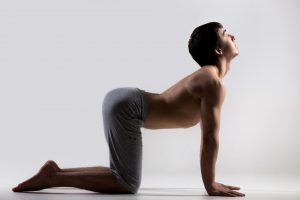
This yoga stretch pose is great for increasing mobility. You are getting on your hands and knees and essentially mimicking a cow and a cat in this pose. The Chakravakasana helps maintain the health of the spine and strengthen the abdominal muscles. Furthermore, it is advised that you close your eyes while traveling through cat-cow.
To perform this, Place your hands beneath your shoulders On all fours, keep your wrists beneath your shoulders and knees behind your hips. Begin with cow by curling your toes under and sinking your tummy while staring up at the sky on an inhale. During an exhale, transition to cat by lowering your tops of feet to the floor, rounding your spine, and bringing your gaze to your belly.
Reclined Hand To Big Toe Pose
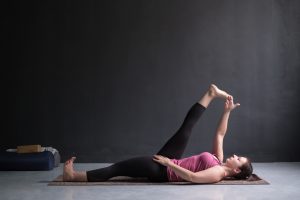
For this pose, a yoga strap is recommended. But if you do not have a strap, any belt will do – or you can even just hold the back of your leg. The ideal approach to stretch your groins, hips, hamstrings, and calves is to keep your leg as straight as possible. Don’t be concerned with how high you can raise your leg; what matters is you go as far you can.
Pyramid Pose

Pyramid targets your hamstrings and hips powerfully. Use props as needed; and keep in mind that both hip points should face the front of the mat in this pose. This particular pose improves postural habits while also improving balance and full-body coordination. The spine, chest, and hips are all stretched in Parsvottanasana. It is also thought to be beneficial for flat feet. Hence improving overall mobility and flexibility.
Half Moon Pose

Half Moon adds a little more challenge by integrating balance, but it’s still a great technique to open up the hamstrings, hips, ribs, and chest. If you are a beginner, Triangle (Trikonasana) position can be substituted for a similar stretch with less risk of tipping over. This posture is also made easier by using a block.
Chair Pose
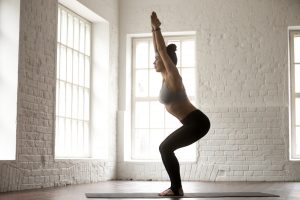
This pose stimulates the abdominal organs while strengthening the ankles, calves, and spine. For this, you should bend your knees and aim to make your thighs parallel to the floor while keeping your tailbone down and your chest lifted in a mountain pose. Furthermore, it also helps stabilize knees and makes your ankles sturdier. As you stretch your arms up, the muscles near your ribs stretch, thus improving your breathing capacity.
Make sure you have proper alignment when following the poses for improved mobility and flexibility. You should make sure you listen to your body and adjust to each one at your own pace. Also, try not to push your body into a pose as that can be counterproductive. Holding poses may seem challenging at first, but you will become better and find it easier each time – as you continue to practice yoga.
The aim of yoga for mobility and flexibility is to make sure you and your body feel relaxed afterward. Regularly practicing yoga poses is a highly efficient approach to relieve muscle tension and increase flexibility. The key is to start slow and gradually increase the amount of time you can hold a position with proper form.
Final Thoughts
As you can see, practicing yoga poses regularly can improve your mobility and flexibility. It’s important to listen to your body and make sure you adjust to each pose at your own pace. Remember that holding poses may seem challenging at first, but you will become better and find it easier each time – as you continue to practice yoga. So, what are you waiting for? Start practicing today!
Frequently Asked Questions
Q: What are the benefits of practicing yoga for mobility and flexibility?
A: Practicing yoga regularly can improve your overall mobility and flexibility. It can also help relieve tension in the muscles, increase your breathing capacity, and improve your balance and coordination.
Q: What should I do if I’m a beginner?
A: If you are a beginner, start slow and gradually increase the amount of time you can hold a position with proper form. Also, try not to push your body into a pose as that can be counterproductive.
Q: What should I do if I’m feeling uncomfortable in a pose?
A: If you’re feeling uncomfortable in a pose, make sure you adjust to each one at your own pace. Remember that holding poses may seem challenging at first, but you will become better and find it easier each time – as you continue to practice yoga.






